An Efficient Numerical Approach for Field Infrared Smoke Transmittance Based on Grayscale Images
Abstract
:1. Introduction
2. Experimental Setup
3. Principles of Numerical Approach
3.1. Grayscale Smoke Transmittance Model
3.2. Selections of Positions
- (a)
- choose one midpoint beside the target;
- (b)
- choose the mean value of four midpoints surrounding the target;
- (c)
- choose the mean value of the points circled around the target.
4. Results and Discussion
5. Conclusions
- (1)
- With the help of the field target array and one thermal infrared imager, a method for testing smoke transmittance is put forward, which efficiently solves the difficulty of measuring smoke transmittance in the field trial.
- (2)
- The infrared radiance of the target and the background in the field trial can be expressed by a corresponding gray value in the infrared image to some extent.
- (3)
- The selection of positions of and is discussed. Three different value computing methods of the background position are compared, which provides a recommendation of choosing the mean value of midpoints circled around the target to represent the background gray value.
Acknowledgments
Author Contributions
Conflicts of Interest
References
- Titterton, D.H. A review of the development of optical countermeasures. In Proceedings of the European Symposium on Optics and Photonics for Defence and Security, London, UK, 29–31 December 2004. [Google Scholar]
- Cudziło, S. Studies of IR-screening smoke clouds. Propellants Explos. Pyrotech. 2001, 26, 12–16. [Google Scholar] [CrossRef]
- Rose, A.H.; Nader, J.S. Field evaluation of an improved smoke inspection guide. J. Air Pollut. Control Assoc. 1958, 8, 117–119. [Google Scholar] [CrossRef]
- Milham, M.E.; Anderson, D.H.; Frickel, R.H. Infrared optical-properties of phosphorus-derived smoke. Appl. Opt. 1982, 21, 2501–2507. [Google Scholar] [CrossRef] [PubMed]
- Kleindienst, S.; Dimmeler, A.; Clement, D. Obscuration effects of smoke clouds, Targets and Backgrounds: Characterization and Representation. In Proceedings of the SPIE’s 1995 Symposium on OE/Aerospace Sensing and Dual Use Photonics, Orlando, FL, USA, 2–7 June 1995. [Google Scholar]
- Tomescu, M.; Marginean, R.; Nitis, E.; Negosanu, M.; Vizireanu, M. Evaluating smoke screens’ masking ability in infrared using thermovision equipment. In Proceedings of the SIOEL: Sixth Symposium on Optoelectronics, Bucharest, Romania, 23–28 February 2000. [Google Scholar]
- Singh, A.; Kamale, P.J.; Joshi, S.A.; Bankar, L.K. Bursting smoke as an infrared countermeasure. Def. Sci. J. 1998, 48, 297–301. [Google Scholar] [CrossRef]
- Singh, A.; Avachat, S.G.; Joshi, S.A.; Singh, H. Evaluation of pyrotechnic smoke for anti-infrared and anti-laser roles. Propellants Explos. Pyrotech. 1995, 20, 16–20. [Google Scholar] [CrossRef]
- Wu, X.; Zhang, J.Q.; Huang, X.; Liu, D. Gpu-accelerated real-time IR smoke screen simulation and assessment of its obscuration. Infrared Phys. Technol. 2012, 55, 150–155. [Google Scholar] [CrossRef]
- Ensor, D.S.; Sparks, L.E.; Pilat, M.J. Light transmittance across smoke plumes downwind from point sources of aerosol emissions. Atmos. Environ. 1973, 7, 1267–1277. [Google Scholar] [CrossRef]
- Cook, C.S.; Conner, W.D.; Bethke, G.W. Remote measurement of smoke plume transmittance using lidar. Appl. Opt. 1972, 11, 1742–1749. [Google Scholar] [CrossRef] [PubMed]
- Gao, L.X.; Wang, Q.; Xiong, L.Y.; Bao, J.A.; Wang, J.Z. Research on multi-channel smoke screen infrared transmittance measurement. In Proceedings of the 2009 2nd IEEE International Conference on Computer Science and Information Technology, Beijing, China, 8–11 August 2009. [Google Scholar]
- Butters, B.; Walmsley, R. Use of a transmissometer model for infrared smoke model validation and assessment of obscuration and detection times. In Proceedings of the SPIE Security + Defense: Technologies for Optical Countermeasures V, Cardiff, UK, 2–5 October 2008. [Google Scholar]
- Farmer, W.M.; Davis, R.E.; DeAntonio, M.; Rust, L. An evaluation of transmissometer systems used to measure smoke screen performance. In Proceedings of the 1988 Technical Symposium on Optics, Electro-Optics, and Sensors, Orlando, FL, USA, 10 August 1988. [Google Scholar]
- Wang, N.; Wang, Z.; Dong, H.; Zhang, G.; Liu, Y. The application of fourier transform infrared spectrometer to the smoke determination. Chin. J. Anal. Chem. 2001, 29, 443–445. [Google Scholar]
- Huang, W.; Ji, H.H.; Ren, S. Non-uniformity correction for the measurement results of ftir spectrometer. Laser Infrared 2015, 45, 400–405. [Google Scholar]
- Laubscher, B.E.; Borel, C.C.; Lomheim, T.S. Methodology for rapid infrared multispectral electro-optical imaging system performance analysis and synthesis. In Proceedings of the Aerospace/Defense Sensing and Controls, Orlando, FL, USA, 10–13 June 1996. [Google Scholar]
- Pollock, D.H. Countermeasure Systems, Volume 7, Infrared and Electro-Optical Systems Handbook; SPIE Optical Engineering Press: Bellingham, WA, USA, 1993; pp. 362–363. [Google Scholar]
- Oliveros, C.S.; Sánchez, G.S.-M.; Pérez, C.R. Field trials for determining the visible and infrared transmittance of screening smoke. In Proceedings of the SPIE Security + Defence: Technologies for Optical Countermeasures VI, Berlin, Germany, 26–29 September 2009. [Google Scholar]
- Rogalski, A. Recent progress in infrared detector technologies. Infrared Phys. Technol. 2011, 54, 136–154. [Google Scholar] [CrossRef]
- Jacobs, P.A. Thermal Infrared Characterization of Ground Targets and Backgrounds, 2nd ed.; SPIE Press: Bellingham, WA, USA, 2006; pp. 86–89. [Google Scholar]
- Gonzalez, R.C.; Woods, R.E. Digital Image Processing, 4th ed.; Pearson/Prentice Hall: Upper Saddle River, NJ, USA, 2010; pp. 60–232. [Google Scholar]
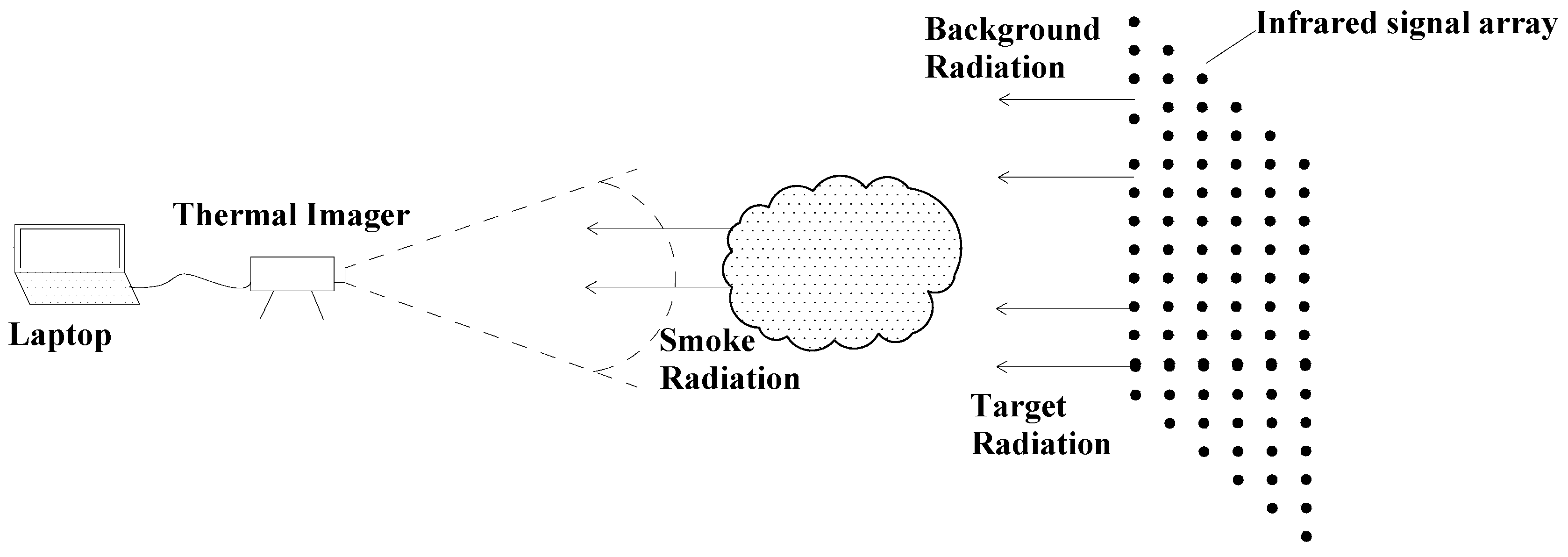
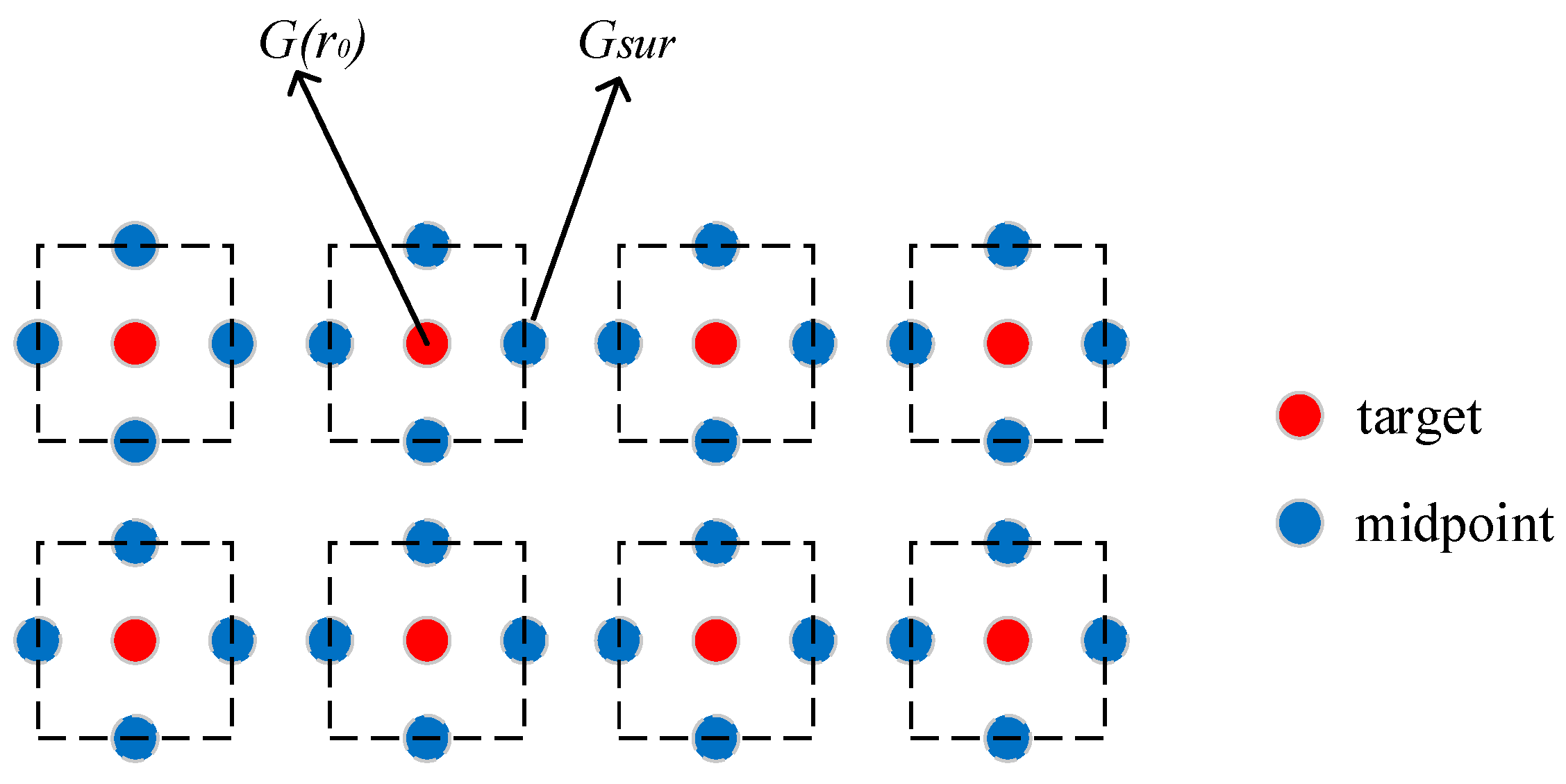
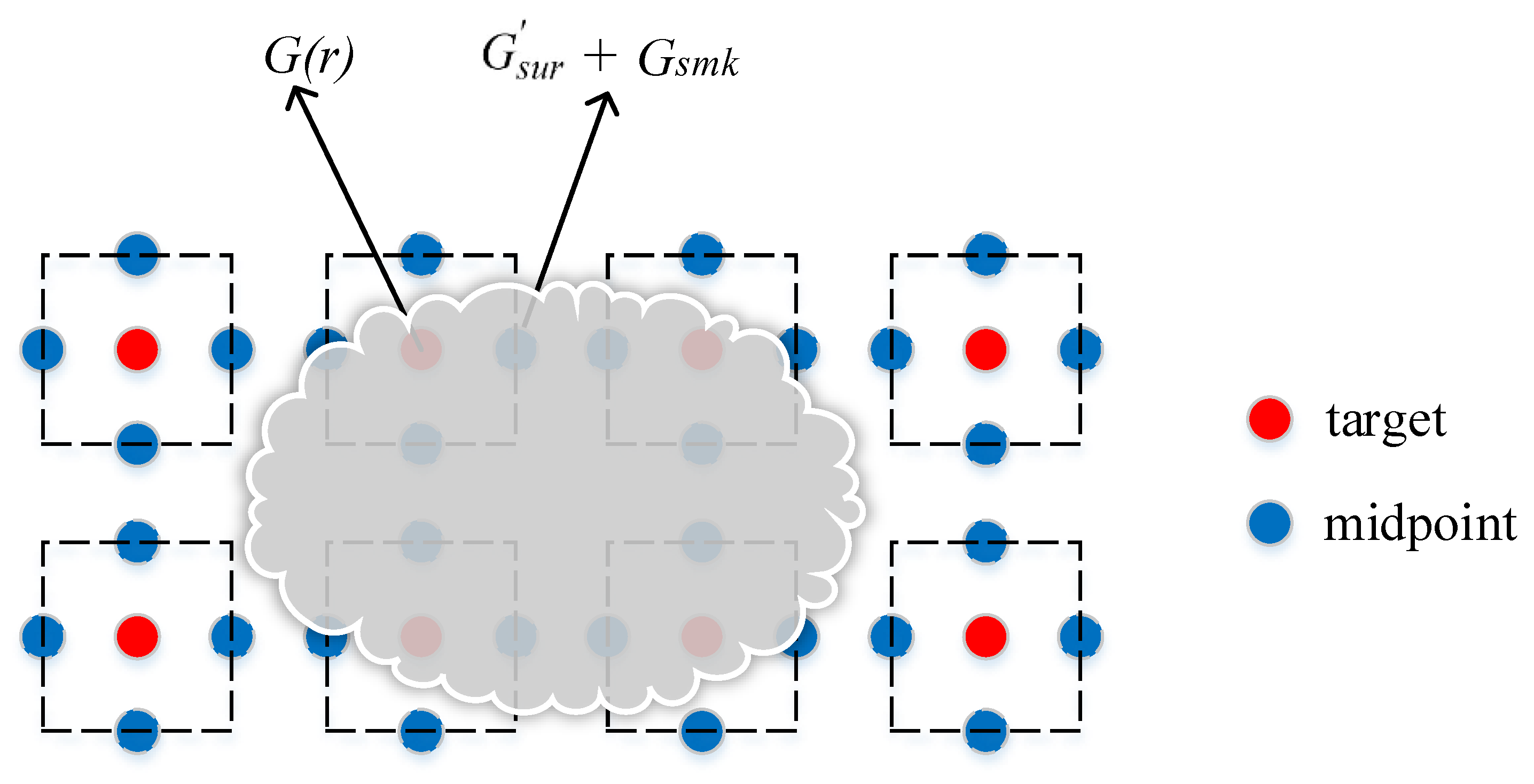



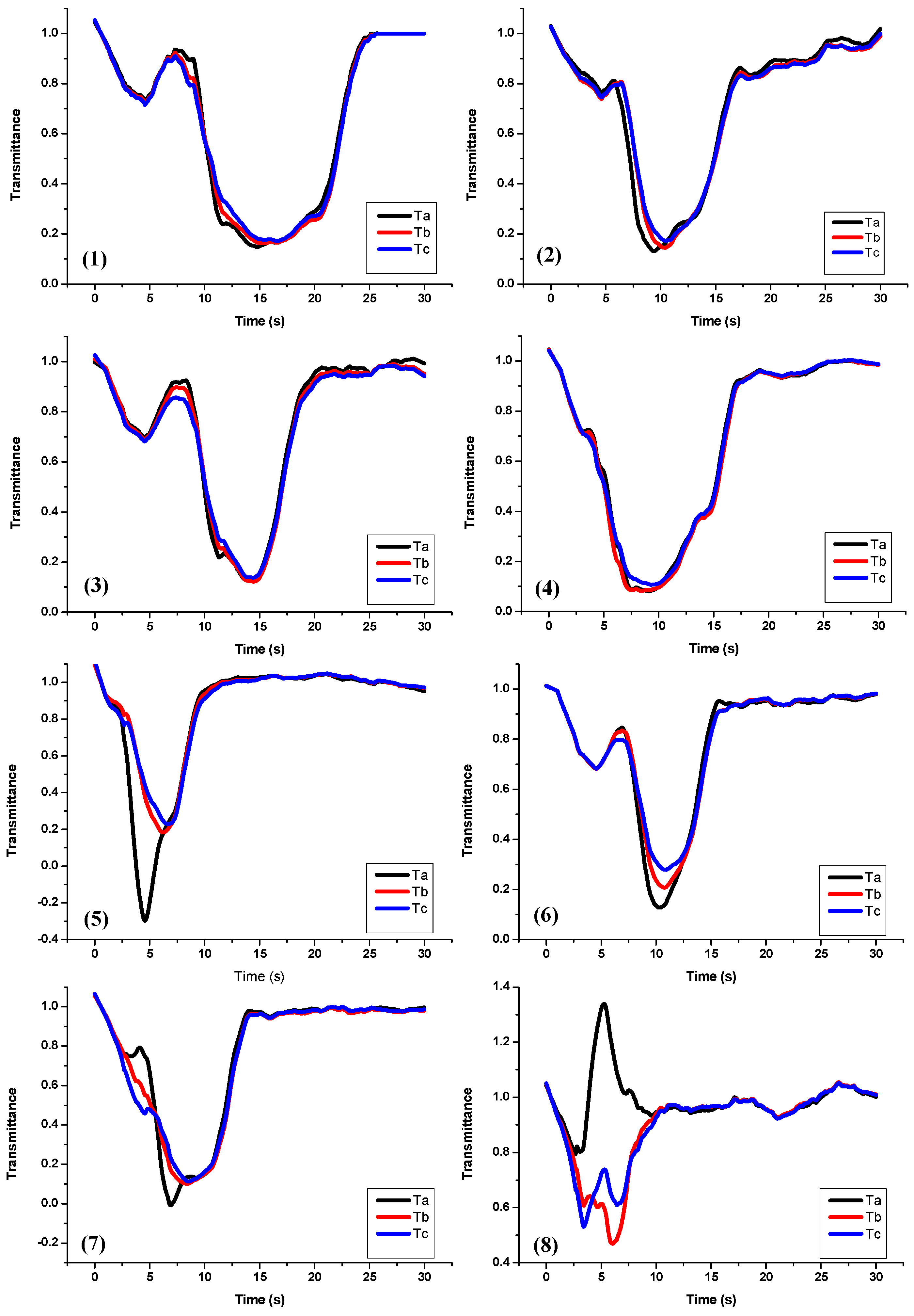
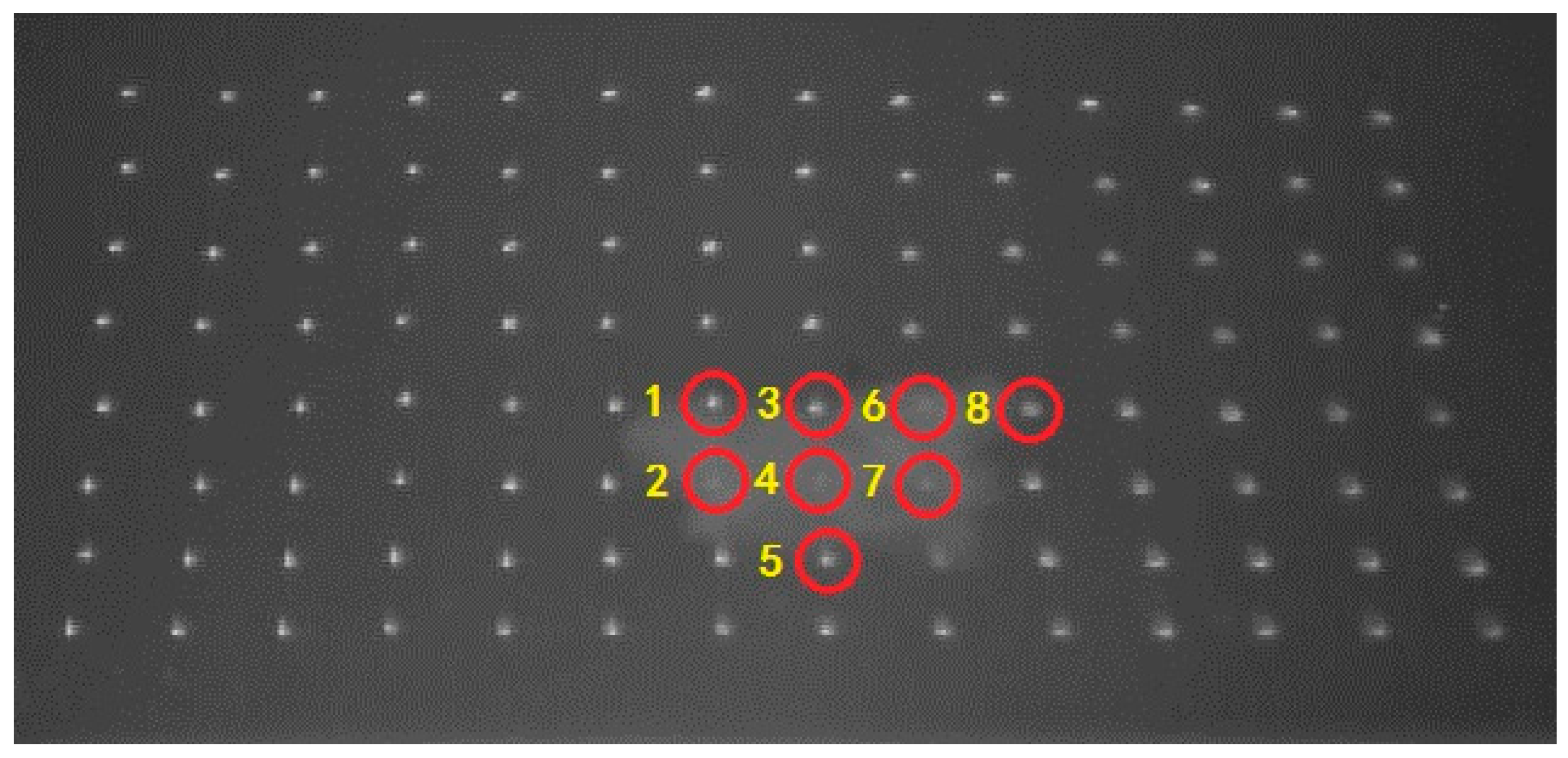
| Number | 1 | 2 | 3 | 4 | 5 | 6 | 7 | 8 |
| Transmittance | 0.66 | 0.19 | 0.59 | 0.11 | 0.89 | 0.12 | 0.19 | 0.98 |
© 2017 by the authors. Licensee MDPI, Basel, Switzerland. This article is an open access article distributed under the terms and conditions of the Creative Commons Attribution (CC BY) license (http://creativecommons.org/licenses/by/4.0/).
Share and Cite
Tang, R.; Zhang, T.; Wei, X.; Zhou, Z. An Efficient Numerical Approach for Field Infrared Smoke Transmittance Based on Grayscale Images. Appl. Sci. 2018, 8, 40. https://doi.org/10.3390/app8010040
Tang R, Zhang T, Wei X, Zhou Z. An Efficient Numerical Approach for Field Infrared Smoke Transmittance Based on Grayscale Images. Applied Sciences. 2018; 8(1):40. https://doi.org/10.3390/app8010040
Chicago/Turabian StyleTang, Runze, Tonglai Zhang, Xuebin Wei, and Zunning Zhou. 2018. "An Efficient Numerical Approach for Field Infrared Smoke Transmittance Based on Grayscale Images" Applied Sciences 8, no. 1: 40. https://doi.org/10.3390/app8010040




